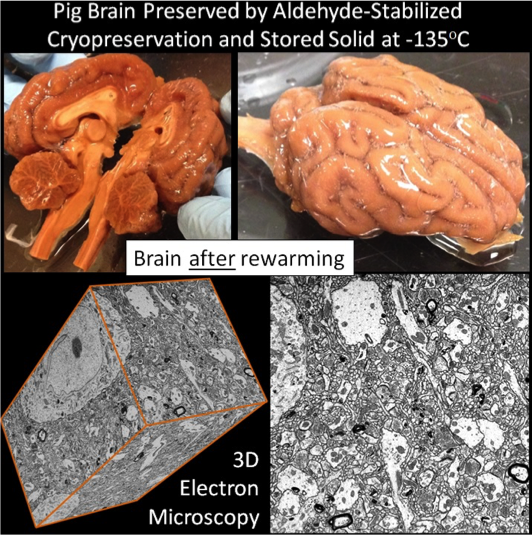Category: life extension – Page 463
Curing Aging!/Nobel Prize Winner & dr Bill Andrews- ep 110. Debt Nation
WANT TO SEE MORE?
LIKE & SUBSCRIBE & JOIN OUR DEBT NATION FACEBOOK: https://bit.ly/30yEGGo
WANT TO SEE MORE?
LIKE & SUBSCRIBE & JOIN OUR DEBT NATION YOUTUBE:
HERE: https://bit.ly/2kp4vbB
Dr. Bill Andrews Presentation & Tour of Sierra Sciences on October 11TH, 2019
Excellent lecture. Darwin’s turtle, sharks and clams 500 years old, talking about Liz Parrish at an hour and 8. And then a tour.
My mission is to drastically improve your life by helping you break bad habits, build and keep new healthy habits to make you the best version of yourself. I read the books and do all the research and share my findings with you!
This video is DR. BILL ANDREWS PRESENTATION & TOUR OF SIERRA SCIENCES ON OCTOBER 11TH, 2019. Brent Nally recorded, edited and produced this video. My apologies for the poor audio and camera work in the first few minutes. Infinite gratitude to Bill for opening up Sierra Sciences to us. Here’s a link to purchase IsaGenesis. You have to sign up first: https://getstarted.isagenix.com/VF234XXQV001
- Please consider a donation to me: My Bitcoin Cash (BCH) address: qr9gcfv92pzwfwa5hj9sqk3ptcnr5jss2g78n7w6f2 or https://paypal.me/BrentNally
SHOW NOTES:



Health and Wellness Providers Are Banking On Virtual Care To Better Serve America’s Aging Boomers
Nearly half the U.S. population is projected to have one or more chronic conditions by 2030 and the need to better manage both care delivery and costs has never been greater.
At the same time, Baby Boomers are entering their “Golden Years” and seeking out preventative and lifestyle medicine to ensure that they live longer and with more personal freedom. And they want to do all of this while “aging in place” and not being relegated to the decrepit and outdated nursing homes of their own parents’ generation. After all, we live in a new era of instant song selection, streaming movies, and Amazon home delivery.

Large Mammal BPF Prize Winning Announcement
A technology designed to preserve synapses across the whole brain of a large mammal is successful
Using a combination of ultrafast glutaraldehyde fixation and very low temperature storage, researchers have demonstrated for the first-time ever a way to preserve a brain’s connectome (the 150 trillion synaptic connections presumed to encode all of a person’s knowledge) for centuries-long storage in a large mammal. This laboratory demonstration clears the way to develop Aldehyde-Stabilized Cryopreservation into a ‘last resort’ medical option, one that would prevent the destruction of the patient’s unique connectome, offering at least some hope for future revival via mind uploading. You can view images and videos demonstrating the quality of the preservation method for yourself at the evaluation page.
Liz Parrish conference at RAADfest 2019 (05-Oct-2019)
Hayley Harrison sent me this video taken-filmed by Andrés Grases and posted it to Youtube… I know for a certainty that Gene therapy will not increase Life span into 125 or beyond years due to the Animal Eukartyotic cell of the earth having a plague that infects all cells into mutation and early cell death.
This year I had the privilege to record in full Liz Parrish talk delivered at RAADfest 2019 (Revolution Against Aging and Death Festival 2019), which took place in Las Vegas, NV from 3 to 6 of October.
During her talk, Liz tells us about recent developments in the field of gene therapy and what her company BioViva is doing to benefit society by harnessing the power of it.
At the end there is also a 10 min long Q&A session, so don’t miss the video, it’s quite enlightening.

Surprising study shows reduced neuronal activity extends life
Say this about the kinds of molecular mayhem that we know underlie aging: Mechanisms like whether the ends of chromosomes fray (bad) and whether genes’ on-off status breaks down (really bad) at least sound like plausible ways to impair vital organs, from skin to brains and hearts, and produce the whole sorry mess known as aging.
On Wednesday, scientists reported a driver of aging that, in contrast, even the lead researcher diplomatically calls “counterintuitive”: neuronal activity. Aging, of course, affects the brain. But the brain seems to affect aging, too, they found: In creatures from worms to mice to people, high levels of neuronal firing spell a shorter life span. Lower levels — naturally, or due to drugs that dampen neurons’ activity — increase longevity.
The discovery4 was so surprising that it’s taken two years to be published (in Nature) because of how much additional data the outside scientists reviewing the study requested. Geneticist Bruce Yankner of Harvard Medical School, who led the research, understood their skepticism. “If you say you have a cat in your backyard, people believe you,” he said. “If you say you have a zebra, they want more evidence.”
